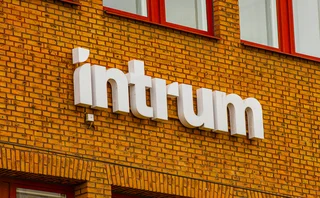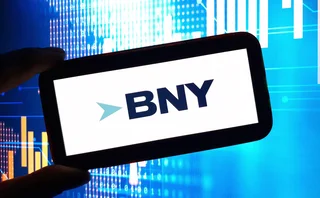
Open interest on E-mini futures surges; S&P 500 vol relents
Open interest on Nasdaq 100 and S&P E-mini futures contracts, electronically traded index futures and options that are smaller than standard futures contracts, has increased by 63% and 15%, respectively, since October. The ratio of open interest to volume for these contracts is also increasing, suggesting that institutions are making increased use of E-minis, according to Goldman Sachs equity derivatives research.
"The ability to trade E-mini S&P MidCap 400 futures will provide individuals and smaller institutions with access to an important portion of the US equity market," said Satish Nandapurkar, a managing director in products and services at the CME. These contracts will be traded on the CME’s Globex trading system and will be sized at $100 times the S&P MidCap 400 index price – or one-fifth of the standard size middle capitalisation futures contract.
Meanwhile, the S&P 500 skew – 25 delta put minus 25 delta call volatility - has finally eased to around 6%. The skew peaked at 9.3% in late September on the back of the equity market downturn, when investors rushed to buy out-of-the-money put options for downside protection, and had traded above 7% until a month ago. A main driver of the shift in the skew was a sharp decline in S&P 500 average stock vol. For example, vol for three-month options declined during November, nearly reaching levels experienced in the early summer – the lowest vols since before the 1998 Russian default crisis, according to Goldman Sachs.
In Europe, implied vol fell most noticeably on the Euro Stoxx 50 and Dax. The spread between at-the-money options and out-of-the-money puts fell by one point. In general, the reduction in the implied vol skew indicates reduced risk aversion in Europe. The collapse in the skew and the fall in implied vol has made zero-premium collars an attractive trade on some European indexes, according to Goldman Sachs.
Only users who have a paid subscription or are part of a corporate subscription are able to print or copy content.
To access these options, along with all other subscription benefits, please contact info@risk.net or view our subscription options here: http://subscriptions.risk.net/subscribe
You are currently unable to print this content. Please contact info@risk.net to find out more.
You are currently unable to copy this content. Please contact info@risk.net to find out more.
Copyright Infopro Digital Limited. All rights reserved.
As outlined in our terms and conditions, https://www.infopro-digital.com/terms-and-conditions/subscriptions/ (point 2.4), printing is limited to a single copy.
If you would like to purchase additional rights please email info@risk.net
Copyright Infopro Digital Limited. All rights reserved.
You may share this content using our article tools. As outlined in our terms and conditions, https://www.infopro-digital.com/terms-and-conditions/subscriptions/ (clause 2.4), an Authorised User may only make one copy of the materials for their own personal use. You must also comply with the restrictions in clause 2.5.
If you would like to purchase additional rights please email info@risk.net
More on Markets
Euro swap spread volatility challenges Bund’s hedging role
German Bunds face scrutiny as euro swap spreads turn negative, forcing traders to rethink hedging strategies
UBS sterling rates head departs
Ian Hale left the Swiss bank in December
Bloomberg offers auto-RFQ chat feed – but banks want a bigger prize
Traders hope for unfettered access to IB chat so they can build their own AI-enhanced trading tools
Intrum auction gives CDS buyers minimal payout
Outcome seen as success for market that needed to adjust auction terms amid ongoing restructuring
South Korea’s FX reforms working amid political crisis, dealers say
Martial law presented first test for reforms aimed at boosting deliverable KRW market
BNY hires Deutsche Bank’s Wu to revamp e-trading
New York-based bank is combining e-FX spot, e-FX forwards trading and strats group
CDS market awaits uncertain Intrum auction result
Swedish firm’s restructuring deal limits flexibility in settling contracts, risking curbs on payouts
Amazon, Meta and Tesla reject FX hedging
Risk.net study shows tech giants don’t hedge day-to-day exposures







